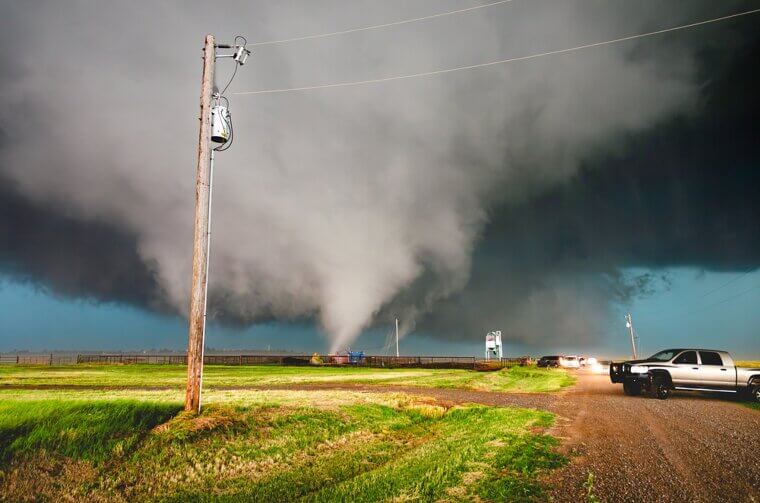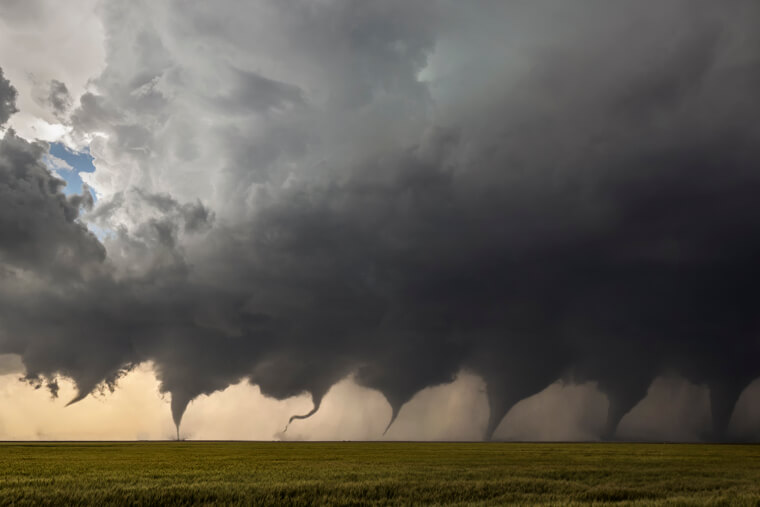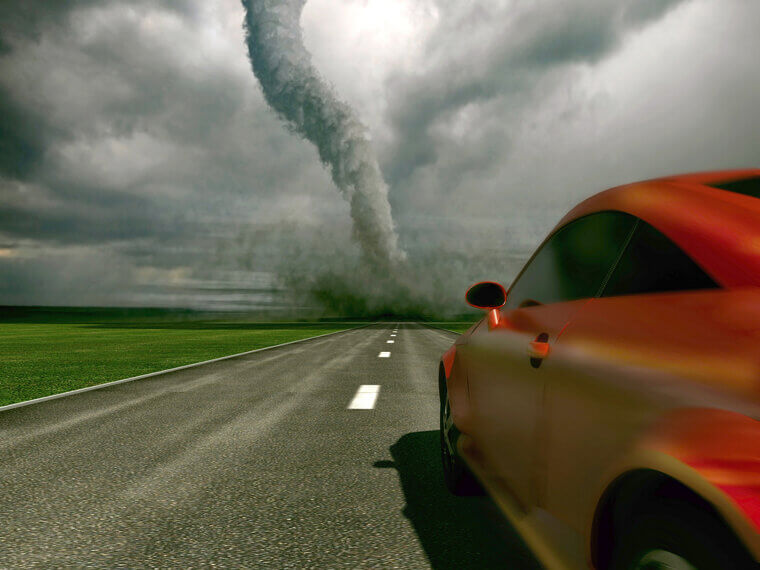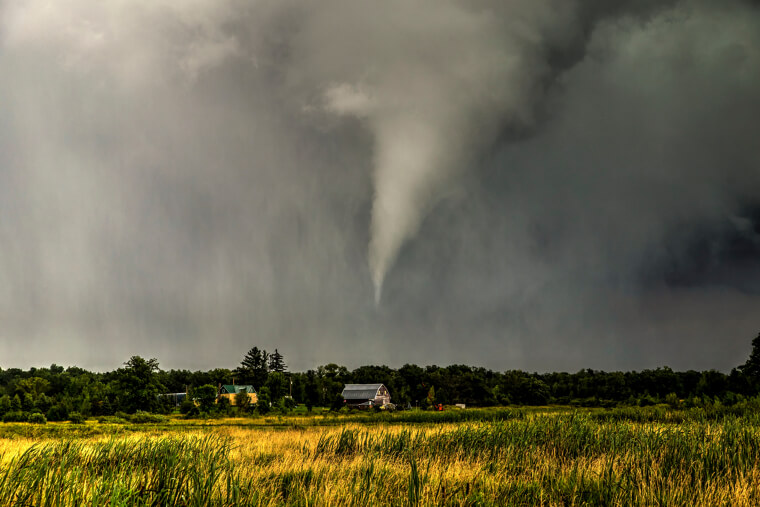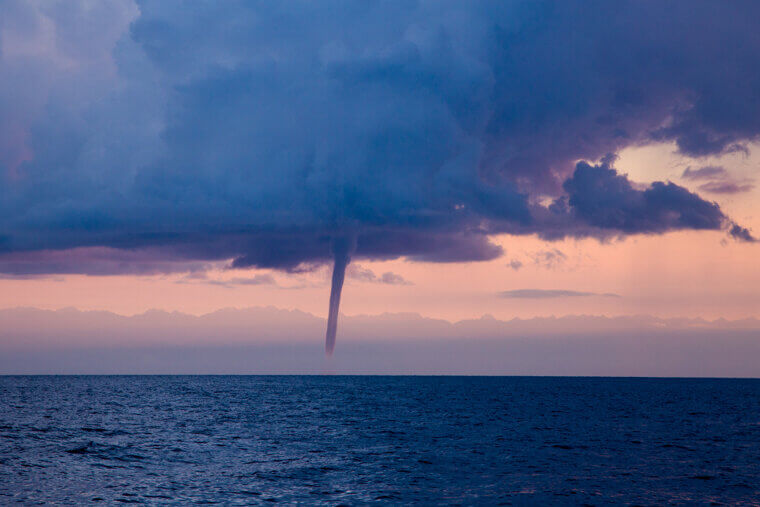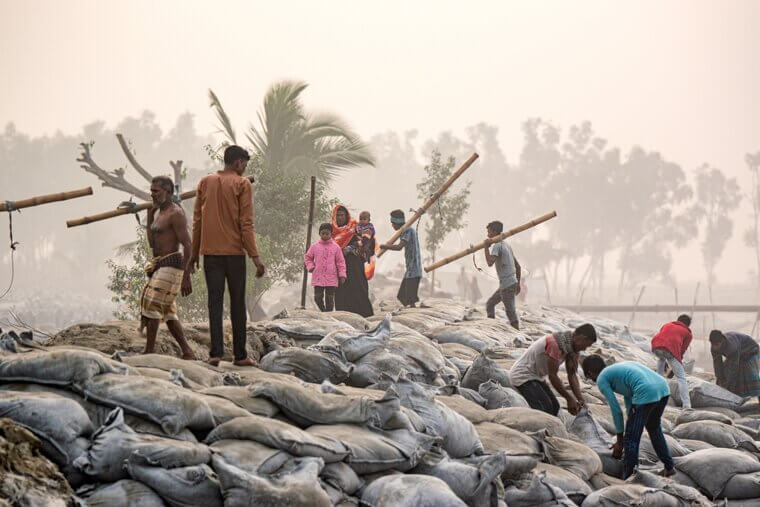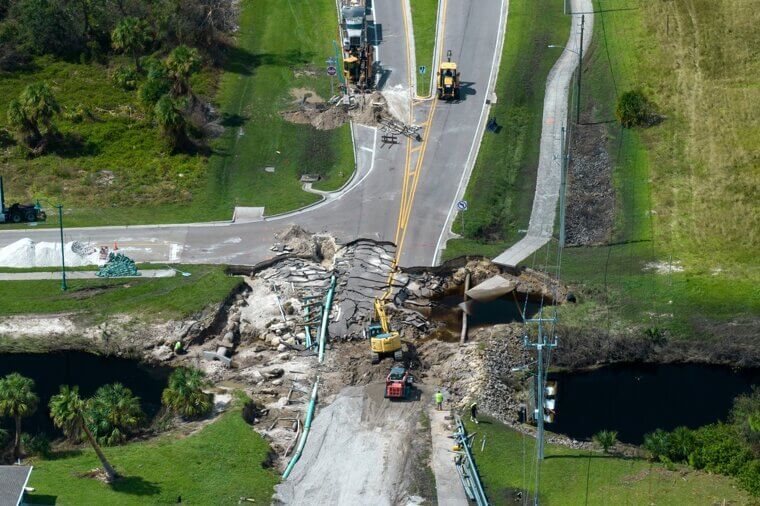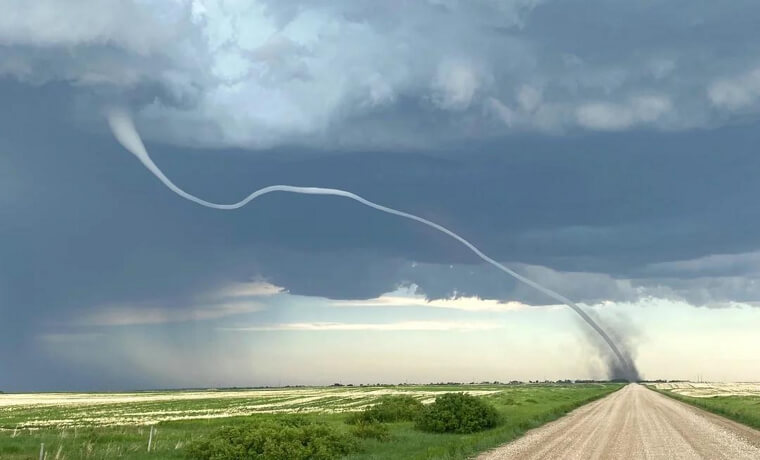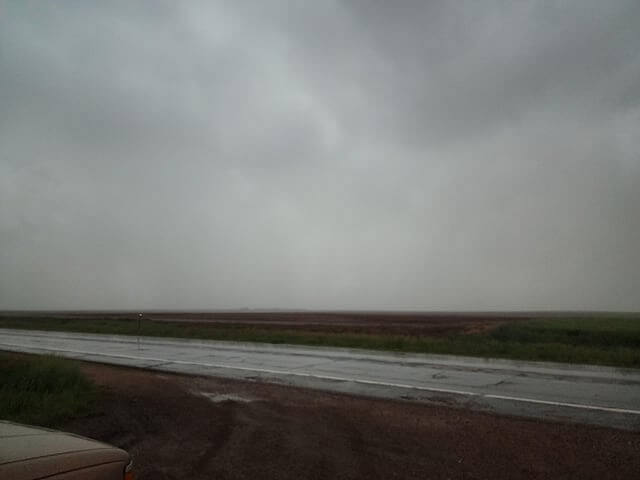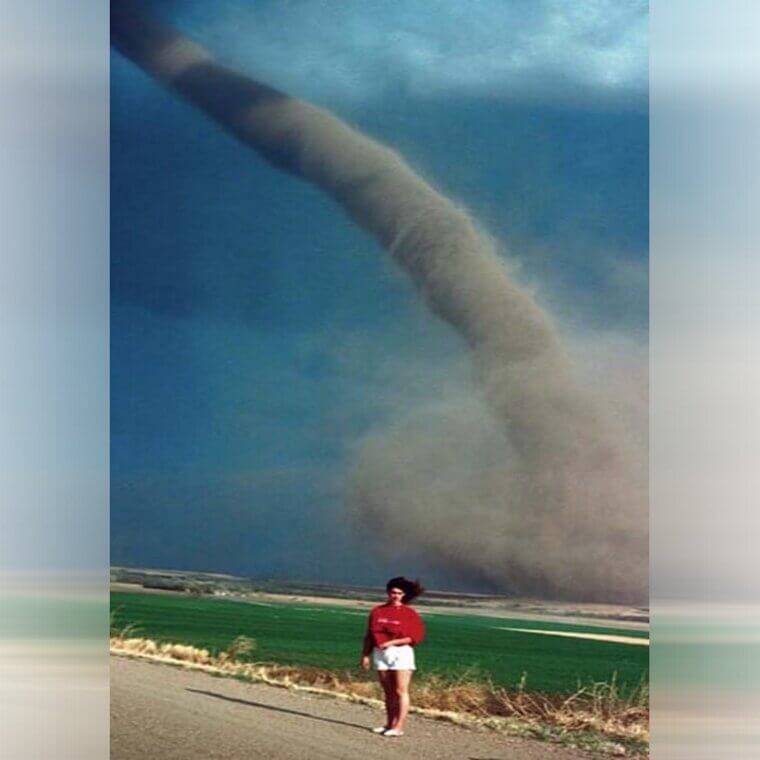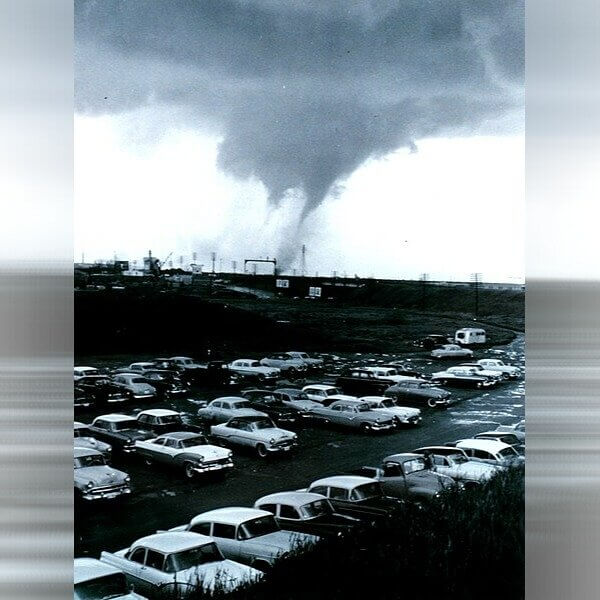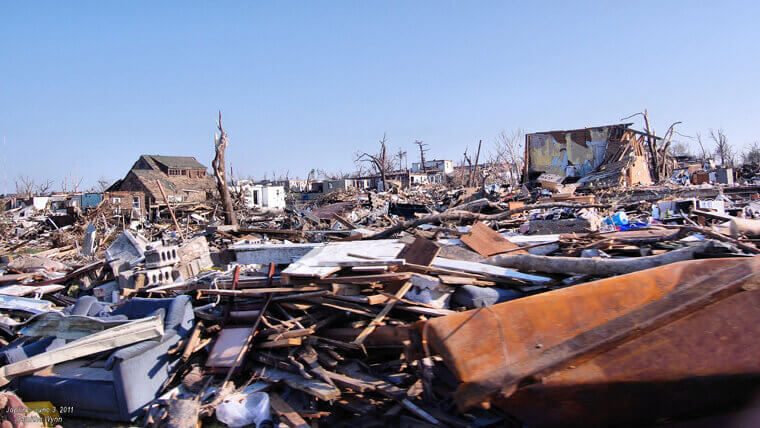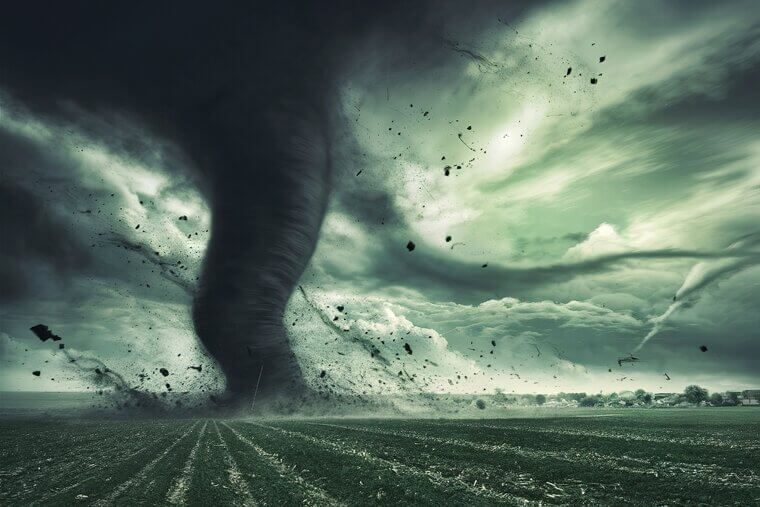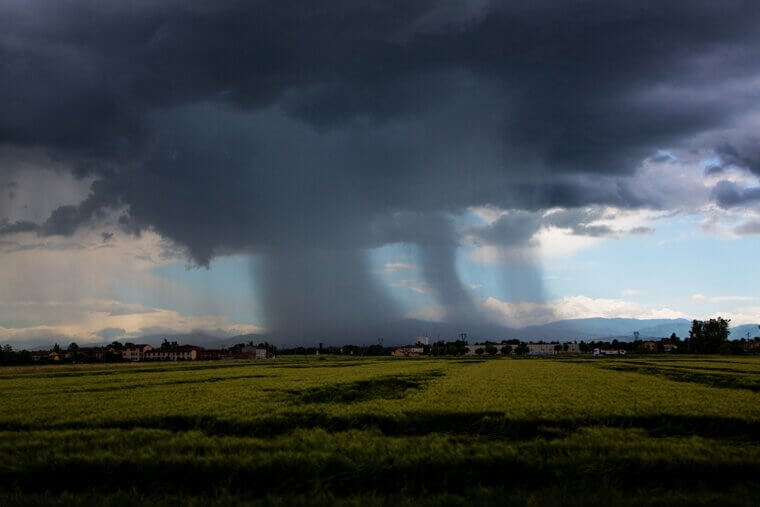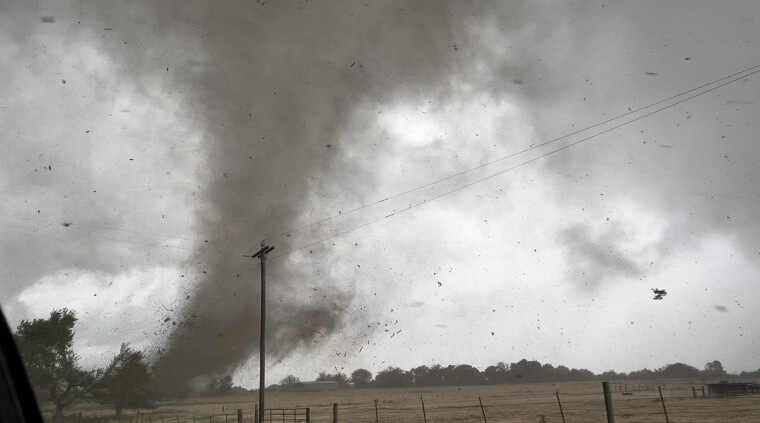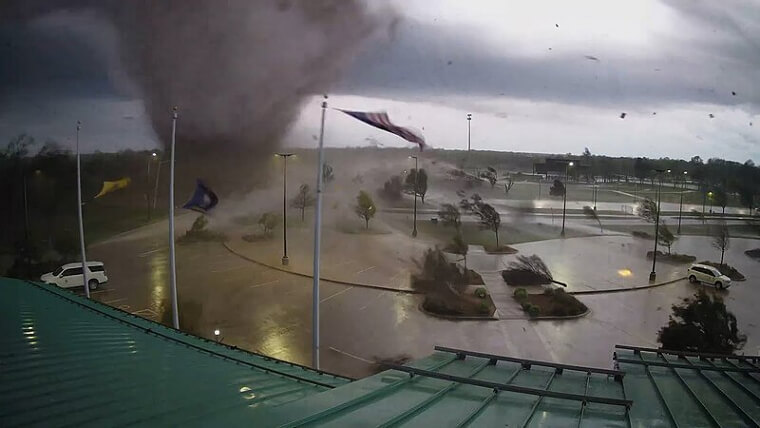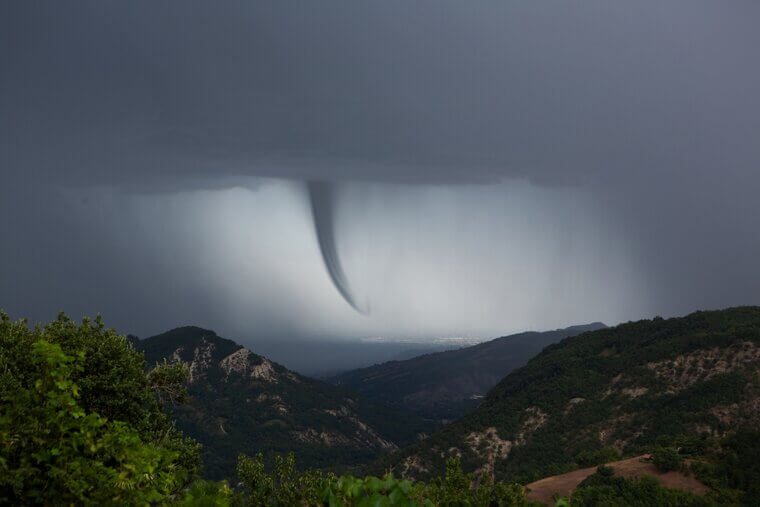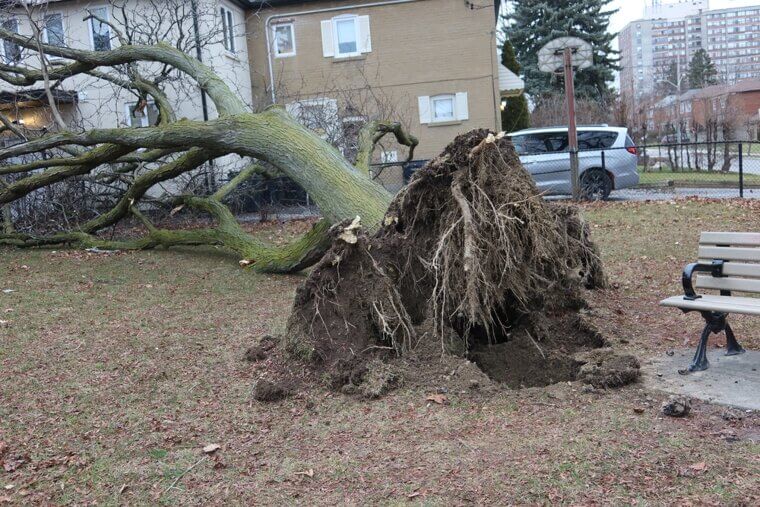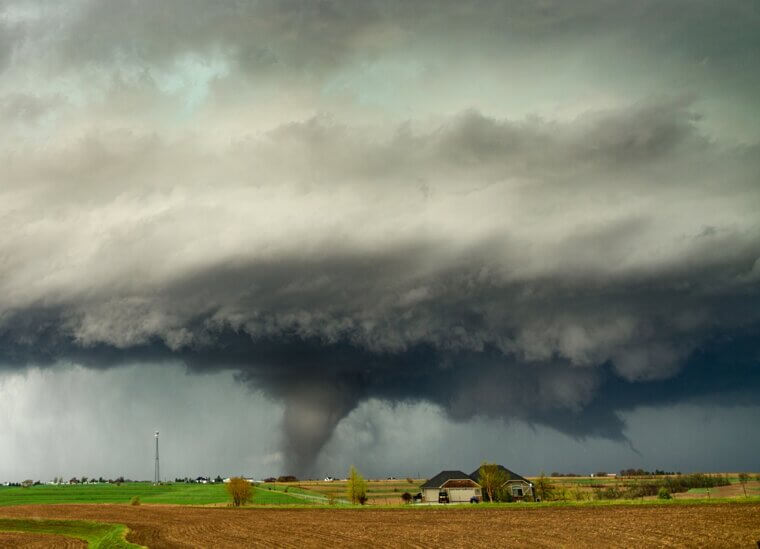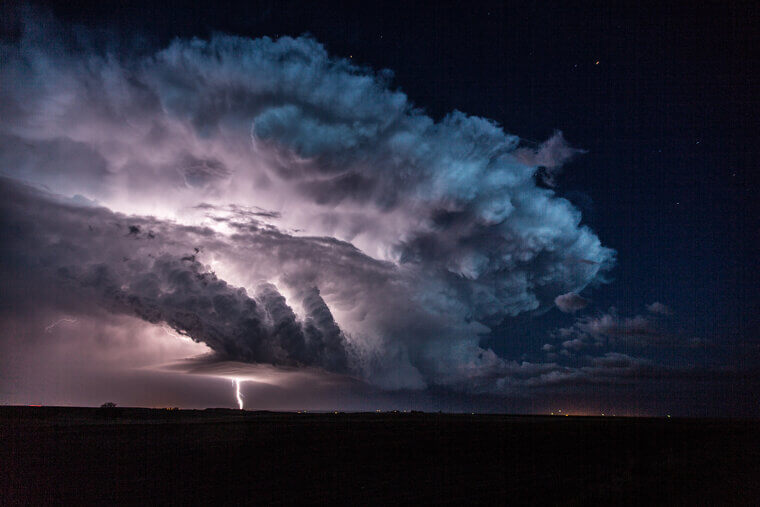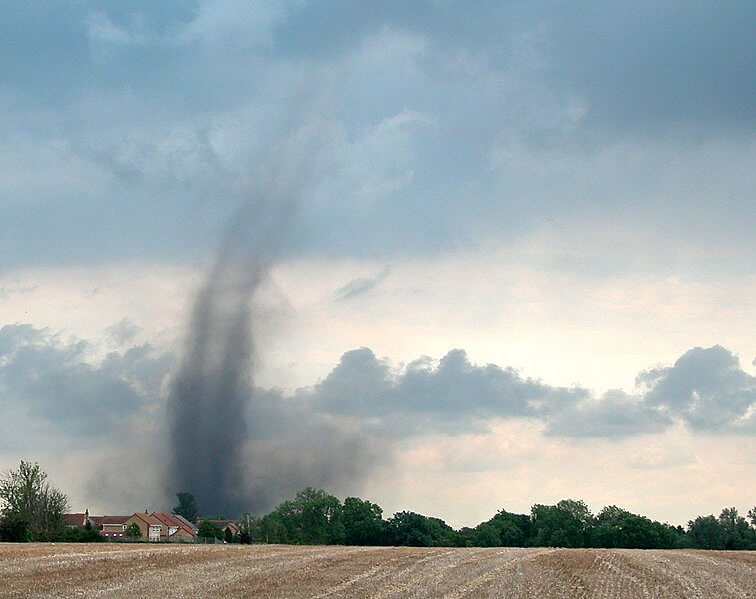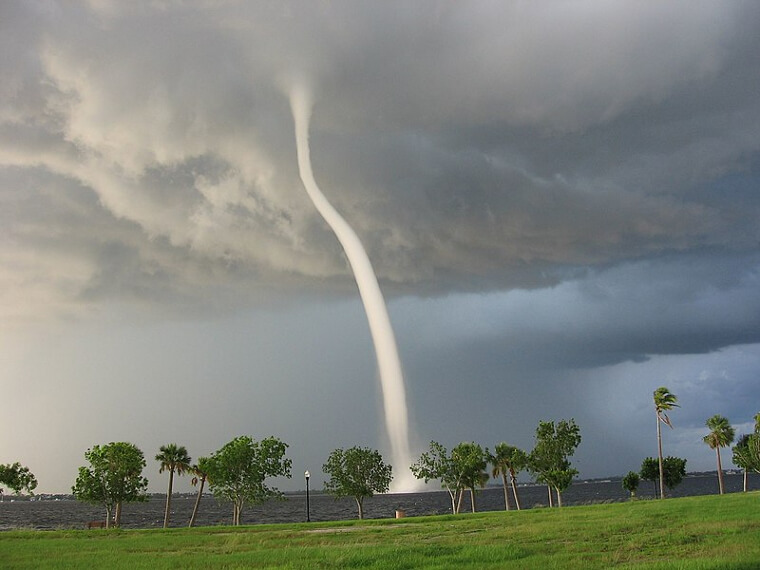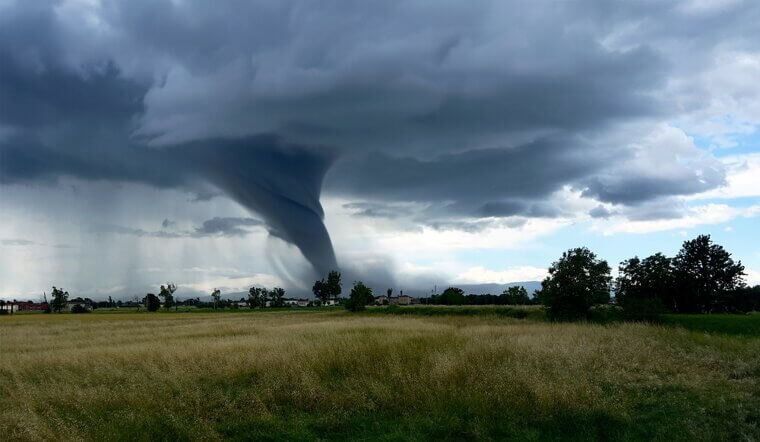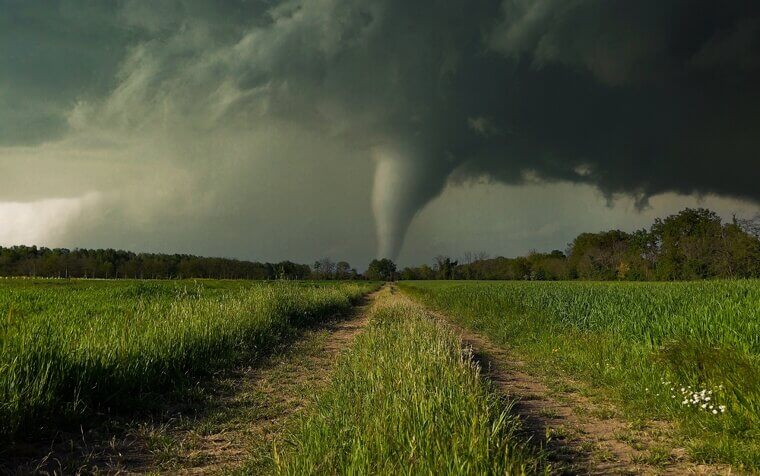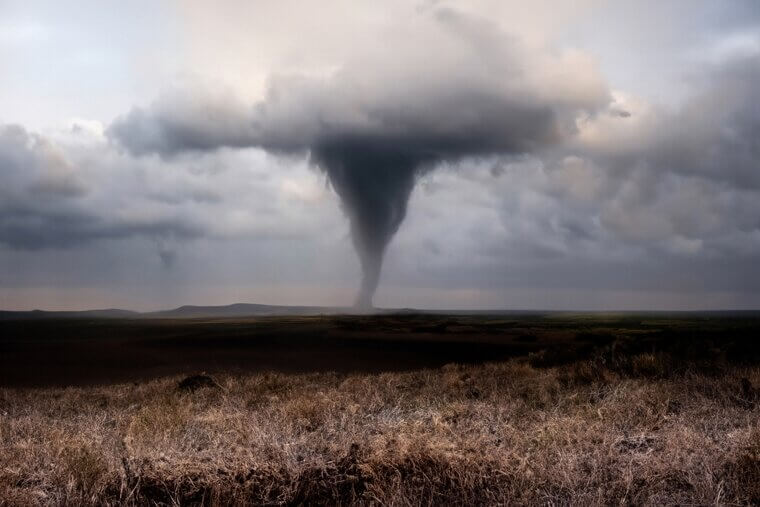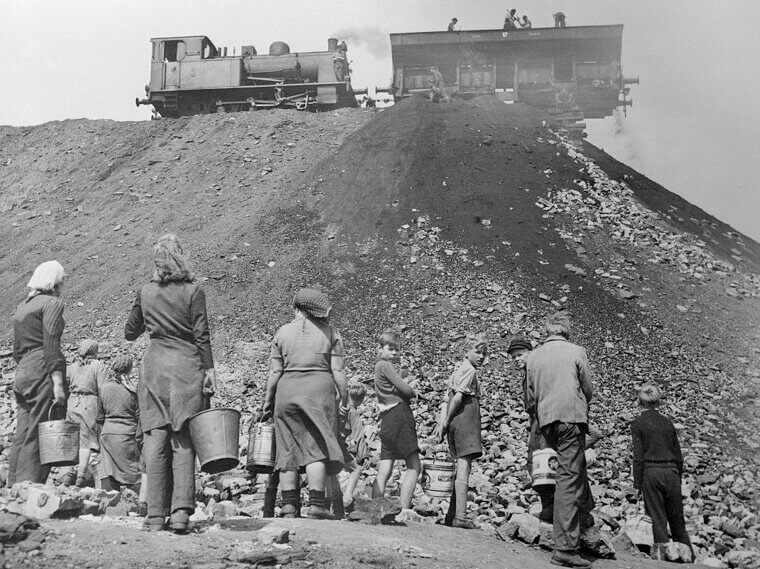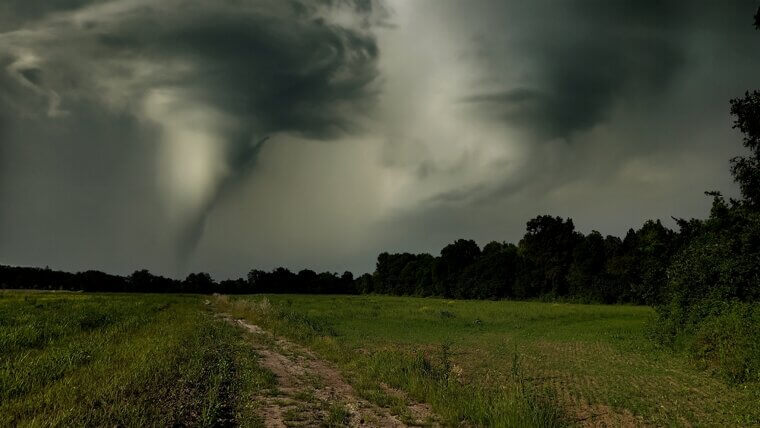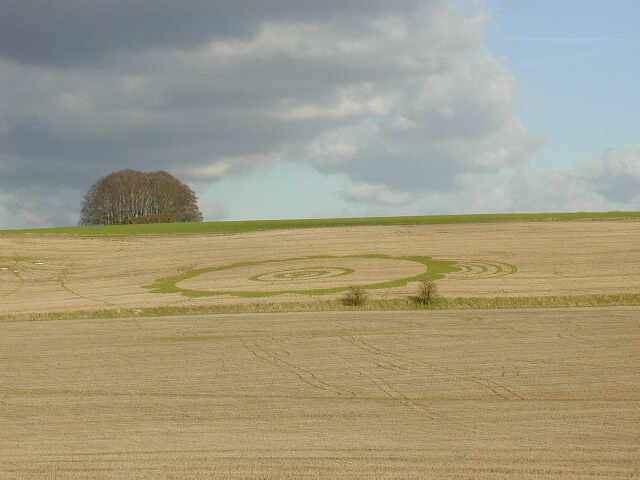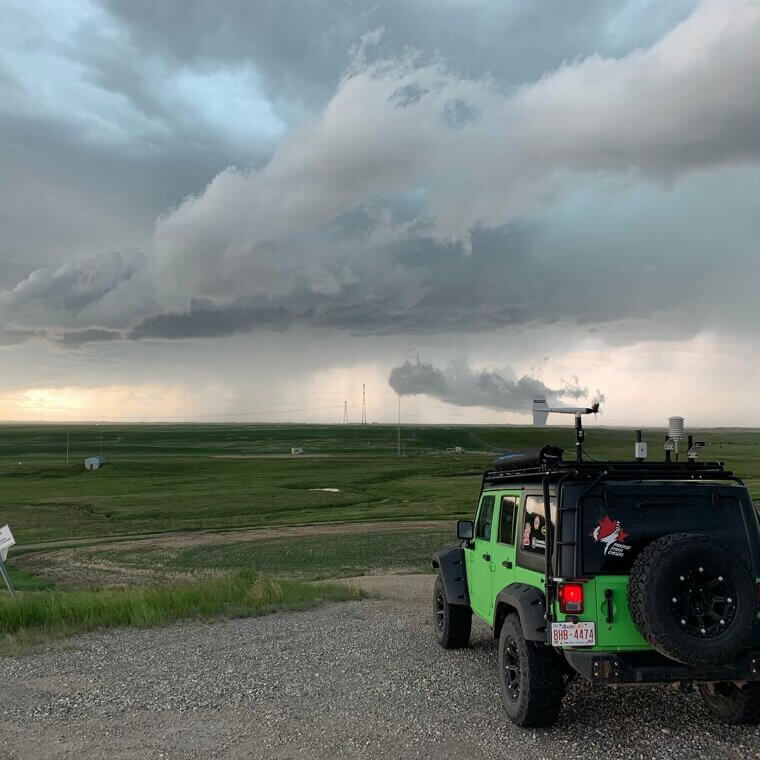The World's Largest Tornado Had a Mind-Boggling Diameter
The world's largest recorded tornado, the El Reno tornado, touched down in Oklahoma on May 31, 2013, and had a staggering diameter of 2.6 miles. To put that into perspective, it could stretch across 46 football fields placed end to end! This colossal EF3 tornado caused widespread devastation, though its erratic path and shifting winds made it difficult for storm chasers to track safely. Despite its size, the El Reno tornado wasn’t the deadliest, as it primarily affected rural areas.
Its immense scale still leaves meteorologists and storm enthusiasts in awe, setting a jaw-dropping record that might never be broken.
Tornadoes Have Been Known to Toss Cows – Really
Yes, it’s true – tornadoes have been known to toss cows! While it might sound like something out of a cartoon, these powerful storms can generate wind speeds over 200 mph, lifting and hurling heavy objects, including livestock. One famous example is the 1996 film Twister, which dramatized this phenomenon. In real life, cows and other large animals caught in a tornado’s path have been carried for miles before being set down, often miraculously unharmed.
While humorous to imagine, it underscores the incredible strength of these storms and the importance of seeking shelter during tornado warnings!
There's a Tornado Alley – But It’s Not Where You Think
When people think of Tornado Alley, they often picture the flat, sprawling plains of Kansas and Oklahoma, and they’re not wrong. But Tornado Alley is more expansive than you might realize! This tornado hotspot stretches across several states, including Texas, Nebraska, and South Dakota, with activity even extending eastward toward Missouri and Arkansas. Interestingly, some studies suggest the most active area for tornadoes is shifting further east to states like Mississippi and Alabama, dubbed "Dixie Alley."
Wherever it lies, Tornado Alley remains infamous for its frequent twisters, thanks to the perfect mix of warm, moist air from the Gulf and cold, dry air from the Rockies.
Tornado Winds Are Faster Than a Racecar
Tornado winds can reach jaw-dropping speeds of over 300 mph, outpacing even the fastest racecars, which top out around 240 mph. These extreme winds occur in the most intense tornadoes, rated EF5 on the Enhanced Fujita Scale, and are powerful enough to rip apart buildings, uproot massive trees, and hurl cars like toys. To grasp the intensity, imagine a NASCAR speeding at full throttle—but now picture that speed multiplied, swirling chaotically in a deadly vortex.
This staggering wind speed makes tornadoes one of the most destructive forces in nature, emphasizing why timely warnings and sturdy shelters are life-saving necessities.
Tornadoes Can 'Hop' Across Towns
Tornadoes might seem like a continuous path of destruction, but they can actually "hop" across towns, skipping certain areas while devastating others. This happens because tornadoes often lift off the ground temporarily, dissipating or reforming as they travel. These hops can result in seemingly random damage patterns—one street might be completely untouched while the next is flattened. This phenomenon is particularly baffling to witnesses and meteorologists alike.
Tornado hopping highlights the unpredictable nature of these storms, making it even more critical to heed warnings even if it appears a tornado has passed, as it could reform nearby in an instant.
Waterspouts Are Basically Tornadoes on Water
Waterspouts are the watery cousins of tornadoes, forming over oceans, lakes, or large rivers. Like tornadoes, they are spinning columns of air and water, but they’re usually less intense and categorized into two types: fair-weather and tornadic. Fair-weather waterspouts are smaller and less dangerous, forming in calm conditions, while tornadic waterspouts are more powerful and can originate from thunderstorms, just like land-based tornadoes. These swirling spectacles can move onto land, transforming into full-fledged tornadoes and causing destruction.
Though mesmerizing to watch from a safe distance, waterspouts are a vivid reminder of the incredible and sometimes unexpected power of nature.
The Tornado Capital of the World Is Not Where You’d Guess
When thinking about the "Tornado Capital of the World," you might immediately picture Tornado Alley in the United States. Surprisingly, the title actually belongs to Bangladesh! This South Asian country experiences some of the deadliest and most frequent tornadoes globally, often intensified by its tropical climate and densely populated regions. Tornadoes in Bangladesh are especially dangerous because of limited infrastructure and preparedness, leading to higher casualties compared to storms in the U.S.
While the U.S. sees more tornadoes overall, Bangladesh's storms are a stark reminder that twisters are a global phenomenon, not just confined to America's plains.
Tornado Chasers Are the Real-Life Action Heroes
Tornado chasers might seem like adrenaline junkies, but they play a vital role in understanding and predicting these powerful storms. These daring individuals venture into the heart of severe weather to gather critical data, such as wind speeds, pressure changes, and storm dynamics. Their efforts help meteorologists improve forecasting models, saving countless lives by providing earlier and more accurate warnings. Tornado chasing requires nerves of steel, advanced knowledge of weather patterns, and often, specialized vehicles equipped to handle extreme conditions.
While Hollywood has romanticized their work, real-life tornado chasers are dedicated scientists and thrill-seekers risking it all to outsmart nature’s fury.
Tornado Myth Debunked: Hiding Under an Overpass Can Actually Put You in More Danger Than the Storm Itself
It might seem like a solid plan to take shelter under an overpass during a tornado, but this myth can be dangerously misleading. Overpasses can create a wind tunnel effect, intensifying the storm's winds and pulling in debris at lethal speeds. Additionally, the structure offers little protection from flying objects or the tornado’s powerful suction. Experts recommend seeking shelter in a sturdy, enclosed structure or lying flat in a ditch, covering your head to avoid debris.
The overpass myth gained popularity after a viral 1991 video but has since been debunked as a risky and ineffective safety strategy.
Some Tornadoes Rotate Horizontally Before Going Vertical
Before a tornado forms its iconic vertical funnel, it often begins as horizontal rotation in the atmosphere. This horizontal spinning, called a "horizontal vortex," occurs when wind speeds and directions vary at different altitudes—a phenomenon known as wind shear. Thunderstorms with strong updrafts can tilt this horizontal rotation into a vertical position, giving birth to a tornado. This process is a critical step in tornado formation and highlights how complex atmospheric dynamics must align for a twister to develop.
Understanding these precursors helps meteorologists improve tornado forecasting, giving communities more time to prepare for these awe-inspiring but destructive forces of nature.
Tornadoes Have Been Spotted on Other Planets
Believe it or not, tornado-like phenomena aren’t exclusive to Earth—they’ve been observed on other planets too! For example, on Mars, massive dust devils, resembling weaker tornadoes, whirl across its surface, towering up to 12 miles high. Jupiter's iconic Great Red Spot is a colossal storm with cyclonic behavior, though on a much larger and longer-lasting scale than Earth's tornadoes. Even Saturn exhibits storm systems that hint at tornado-like activity.
These extraterrestrial twisters highlight the universality of atmospheric dynamics in our solar system, offering a fascinating glimpse into how storms can manifest under entirely different planetary conditions.
Tornadoes Can Be Invisible and Therefore Impossible to See Until They Cause Damage
Not all tornadoes come with the dramatic, dark funnel clouds we see in movies. Some tornadoes can be completely invisible, making them even more dangerous. These stealthy twisters lack the visible debris or condensed water droplets typically seen in a tornado’s funnel, often because they form in low-humidity conditions. The only signs might be swirling dust at the ground level or their destructive aftermath. This invisibility makes them harder to detect visually.
And that's why meteorologists rely on radar and other technology to issue warnings. It’s a stark reminder to take tornado alerts seriously, even when the skies look clear.
Tornadoes Have Been Known to Rain Fish
It might sound like a tall tale, but tornadoes have actually been known to "rain" fish! This bizarre phenomenon occurs when a tornado or waterspout passes over a body of water, sucking up small fish, frogs, or other aquatic creatures along with water. The storm’s powerful winds can carry these critters miles away, eventually dropping them to the ground once the winds subside. Documented cases of this strange occurrence have been reported worldwide, including in the U.S., Japan, and Australia.
While it may seem surreal, it’s yet another example of how tornadoes can turn the ordinary into the extraordinary.
The Longest Tornado Path Stretched Over 200 Miles
The longest recorded tornado path was carved by the infamous Tri-State Tornado on March 18, 1925. This massive twister traveled a staggering 219 miles across Missouri, Illinois, and Indiana, wreaking havoc for over three and a half hours. Moving at an average speed of 60-70 mph, it was exceptionally fast for a tornado, leaving little time for residents to seek shelter. The Tri-State Tornado remains one of the deadliest in U.S. history.
It claimed nearly 700 lives and devastated numerous towns along its path. Its unprecedented length and destruction highlight the sheer power and unpredictability of these natural disasters.
Tornadoes Can Be Multi-Vortex Monsters
Some tornadoes aren’t just a single swirling funnel—they can spawn smaller, individual vortices within the main tornado, known as suction vortices. These multi-vortex tornadoes are particularly destructive, as each smaller vortex can rotate at incredibly high speeds and carve its own path of damage. These sub-vortices often move erratically, intensifying destruction in specific spots while leaving others relatively untouched. Multi-vortex tornadoes are most commonly found in larger and more intense storms, such as EF4 and EF5 tornadoes.
Their chaotic nature makes them even harder to predict, showcasing just how complex and terrifying these storms can be.
The Tornado Outbreak Record Was in 2011
The largest tornado outbreak on record occurred from April 25 to 28, 2011, across the southeastern United States. Known as the 2011 Super Outbreak, it spawned an astonishing 360 confirmed tornadoes over four days, including 15 EF4s and four EF5s. This devastating event affected 21 states, leaving over 300 people dead and causing billions of dollars in damage. The outbreak was fueled by a rare combination of weather conditions, creating an almost perfect storm for tornado formation.
Among the most infamous twisters was the EF4 that tore through Tuscaloosa and Birmingham, Alabama, leaving a lasting mark on the region’s history.
Tornadoes Can Change Direction Very Suddenly
Tornadoes are notoriously unpredictable and can change direction in an instant, making them incredibly dangerous to track and avoid. These sudden shifts occur when the storm’s internal dynamics, such as wind patterns or pressure gradients, alter the tornado’s path. For example, a tornado moving steadily northeast might suddenly veer westward, catching people off guard. This unpredictability is one reason experts warn against attempting to outrun a tornado in a vehicle—its next move is impossible to predict.
Tornadoes’ erratic behavior highlights the importance of seeking sturdy shelter and staying informed through reliable weather updates rather than relying on observation alone.
Rain Isn’t Always Present During a Tornado
While tornadoes often occur during severe thunderstorms, they don’t always bring rain along with them. In fact, some tornadoes form in conditions where rain is minimal or absent altogether. These “dry tornadoes” can develop in isolated storms or areas where the main rain shaft is far from the funnel. This can make them even more dangerous, as the usual stormy cues—dark clouds, heavy rain, or hail—might be missing.
Clear skies near a tornado are not uncommon, so it’s essential to rely on weather alerts and radar rather than visual signs alone to stay safe during potential tornado events.
Tornadoes Can Turn Debris Into Missiles
One of the most dangerous aspects of tornadoes is their ability to turn ordinary debris into deadly projectiles. With winds reaching over 200 mph, tornadoes can hurl objects like tree branches, shards of glass, and even vehicles at incredible speeds. These flying missiles can pierce walls, injure people, and cause extensive damage far from the tornado’s center. Some stories include wooden planks impaling trees or straws embedded in metal structures, showcasing the immense power behind these winds.
This is why experts stress the importance of sheltering in interior rooms, away from windows and exterior walls, to minimize exposure to airborne debris.
You Can Smell a Tornado
Believe it or not, some people claim they can smell a tornado! While there’s no scientific proof that tornadoes have a distinct scent, many survivors report unusual odors in the aftermath. Common descriptions include the smell of freshly cut grass, earthy dirt, or even sulfur. These scents likely come from the destruction of vegetation, disturbed soil, and damaged infrastructure, like gas lines. Additionally, the storm's intense pressure changes and electrical activity might enhance certain smells in the air.
While it’s not a reliable way to detect a tornado, these unique odors add another layer of mystery to these powerful storms.
Tornadoes Can Cross Mountains
Though mountains might seem like natural barriers, tornadoes are fully capable of crossing them. While hilly or mountainous terrain can disrupt a tornado’s formation, it doesn’t guarantee protection. Tornadoes have been observed traveling over mountain ranges, including the Appalachian and Rocky Mountains. These storms adapt to the terrain, with their paths often influenced by valleys and ridges. For instance, in 2011, tornadoes from the Super Outbreak caused significant damage in mountainous areas of Alabama.
While flatter regions see more frequent tornadoes, mountain communities are not immune to their power, emphasizing the importance of preparedness regardless of geography.
Tornadoes Can Form in Cold Weather
Although tornadoes are typically associated with warm, humid weather, they can also form during colder months under the right conditions. Cold-weather tornadoes usually occur when a strong cold front meets warmer air, creating the instability needed for tornado development. These twisters are often fast-moving and can catch people off guard because they defy the usual “tornado season” expectations. For example, the deadly Midwest tornado outbreak of January 2008 saw dozens of tornadoes during freezing temperatures.
It’s a reminder that tornadoes are not limited to spring and summer—they can strike at any time of year when the atmosphere sets the stage.
Tornadoes Are Surprisingly Quiet From Afar
From a distance, tornadoes can seem eerily quiet, despite their destructive power. Unlike the roaring sound they make up close—often compared to a freight train—tornadoes at a distance are typically masked by the noise of the surrounding storm, including thunder, wind, and rain. This deceptive quietness can lull people into a false sense of security, especially if they can see the tornado but don't hear it.
The sudden onset of its devastating winds and debris underscores why relying on auditory cues alone is not enough. Staying vigilant with weather alerts is crucial, no matter how calm it might seem.
Some Tornadoes Glow at Night
Nighttime tornadoes can sometimes appear to glow, creating an eerie and surreal spectacle. This phenomenon, known as “tornado illumination,” occurs when lightning within or around the storm lights up the funnel. The glow can also result from power lines sparking or transformers exploding as the tornado tears through populated areas. This brief illumination can reveal the tornado’s shape and location, but it also underscores the dangers of nocturnal twisters.
Since they’re harder to see and often strike when people are sleeping, nighttime tornadoes tend to be deadlier. This makes staying alert to warnings even more critical after dark.
Tornadoes Can Throw Debris Over 100 Miles
Tornadoes are so powerful that they can hurl debris more than 100 miles away from their origin. Pieces of homes, vehicles, and even personal belongings have been found astonishing distances from where the tornado touched down. For example, during the Tri-State Tornado of 1925, debris traveled over 200 miles. Similarly, papers and photographs from more recent storms have been recovered in neighboring states. This incredible feat occurs because tornado winds lift debris high into the atmosphere, where strong upper-level winds carry it far away.
These long-distance journeys are a testament to the extraordinary power of these swirling forces of nature.
Tornadoes Can Travel Over Water – And Keep Going
Tornadoes don’t stop when they hit water; instead, they transform into waterspouts if they continue their journey over a lake, river, or ocean. These aquatic tornadoes maintain their spinning, destructive power and can return to land as full-fledged tornadoes, causing damage on both water and land. Known as “landfalling waterspouts,” these phenomena are particularly dangerous to coastal areas. For example, in 2021, a powerful waterspout crossed onto land in Maryland, turning into a tornado that caused significant damage.
Tornadoes’ ability to traverse both land and water showcases their resilience and reminds us that no terrain is safe from their reach.
Tornadoes Don't Really Have a Season - They Happen All Year
While tornadoes are most common during spring and early summer in the U.S., they can occur at any time of year if the conditions are right. Tornado "season" varies by region, with the southern states experiencing twisters in winter and early spring, while northern states see them in summer. In fact, tornadoes have been recorded in every month, including rare but destructive December outbreaks. This year-round potential highlights the importance of staying prepared no matter the season.
Advances in forecasting technology mean warnings are more accurate, but nature’s unpredictability ensures tornadoes remain a threat every month of the year.
Tornadoes Can Last Mere Minutes or Hours
Tornadoes are wildly unpredictable, not just in their paths but also in their duration. Some twisters last only a few minutes, touching down briefly before dissipating, while others, like the Tri-State Tornado of 1925, can endure for hours. Short-lived tornadoes, though brief, can still cause devastating damage due to their intense winds. On the other hand, longer-lasting tornadoes often cover significant distances, leaving widespread destruction in their wake.
Factors such as storm structure, atmospheric conditions, and available energy influence how long a tornado persists. Regardless of their duration, all tornadoes demand caution, as even the shortest ones can be deadly.
Tornadoes Can Spin in Both Directions
While most tornadoes in the Northern Hemisphere rotate counterclockwise due to the Coriolis effect, some twisters defy this norm and spin clockwise. These are known as anticyclonic tornadoes. They’re less common, typically forming under specific atmospheric conditions, such as at the edge of supercells or in weaker storms. In the Southern Hemisphere, the situation flips, with counterclockwise tornadoes being rarer. The direction of rotation doesn’t affect a tornado’s destructive power—it’s the wind speed and size that matter most.
This dual-spinning capability showcases the complexity of tornado dynamics, proving that these storms truly operate on their own unpredictable terms.
A Tornado Once Lifted a Train
In an incredible display of power, tornadoes have been known to lift entire trains off their tracks. One of the most notable examples occurred in 1931 in Minnesota when a tornado lifted a 72-ton train and tossed it 80 feet from its tracks. The immense wind speeds, often exceeding 200 mph in strong tornadoes, can generate enough force to dislodge even the heaviest objects. Witnessing such a phenomenon underscores the raw power of tornadoes, which can easily turn seemingly immovable objects into airborne projectiles.
This jaw-dropping event is a stark reminder of why these storms are considered among nature’s most destructive forces.
Tornado Sirens Aren’t Standard Everywhere
While tornado sirens are a crucial warning tool in many areas, they’re not standard everywhere. These sirens are typically installed in tornado-prone regions, such as Tornado Alley, and are primarily designed to alert people outdoors. However, rural areas, small towns, or regions with infrequent tornado activity may lack this infrastructure. Even where sirens exist, they’re not always audible indoors, especially in modern, well-insulated buildings. That’s why experts emphasize having multiple alert systems, like weather radios, smartphone notifications, or local news updates.
Relying solely on sirens can be risky, as their availability and effectiveness vary widely depending on your location.
Tornadoes Are Common on Every Continent Except Antarctica
Tornadoes are truly a global phenomenon, occurring on every continent except Antarctica. The unique mix of warm and cold air masses, essential for tornado formation, can be found in diverse regions, from the Great Plains of the United States to the grasslands of Argentina and even the Outback of Australia. Europe, Africa, and Asia also experience their share of tornadoes, though they may not be as frequent or intense as those in Tornado Alley.
Antarctica, with its frigid temperatures and lack of thunderstorms, is the only continent spared. This worldwide occurrence underscores tornadoes’ universal appeal—and their universal danger.
The "Tornado Magnet" Myth Isn’t Real
The idea of a "tornado magnet"—a town or location that seems to attract tornadoes—is just a myth. Tornadoes appear random in their paths, but their occurrence is dictated by atmospheric conditions, not geography or man-made structures. Some areas might seem like magnets simply because they sit in high-risk regions, such as Tornado Alley, or because they’ve experienced multiple storms over time. For example, Moore, Oklahoma, has been struck by several major tornadoes, fueling this myth.
However, these patterns are coincidental, not evidence of a magnetic effect. Tornadoes are unpredictable forces of nature, and no place is truly “targeted.”
Tornadoes Can Carve Weird Patterns Into the Ground
Tornadoes are capable of creating bizarre and intricate patterns on the ground, leaving behind what looks like nature’s artwork. As a tornado moves, its intense winds and suction can gouge the earth, uproot vegetation, and scatter debris in unusual ways. Commonly, they leave spiral or circular patterns in crops, known as "crop circles," which are often mistaken for something more mysterious. Tornadoes can also carve trenches, rip up pavement, and strip soil down to bedrock in severe cases.
These strange patterns not only testify to the tornado’s incredible power but also provide scientists with clues about its strength and behavior.
Tornado Tourism Is a Real Thing
Yes, tornado tourism is a real and growing phenomenon! Adventure seekers and weather enthusiasts can join storm-chasing tours to witness tornadoes up close. These guided tours, often led by experienced meteorologists and storm chasers, take participants into Tornado Alley during peak tornado season. While the thrill of seeing nature's fury draws many, the tours also emphasize education, teaching about tornado formation and safety. However, critics argue that tornado tourism can create safety risks, such as overcrowding near dangerous storms.
Despite the risks, for many, the chance to see a tornado in action is a bucket-list experience that combines adrenaline and awe.

